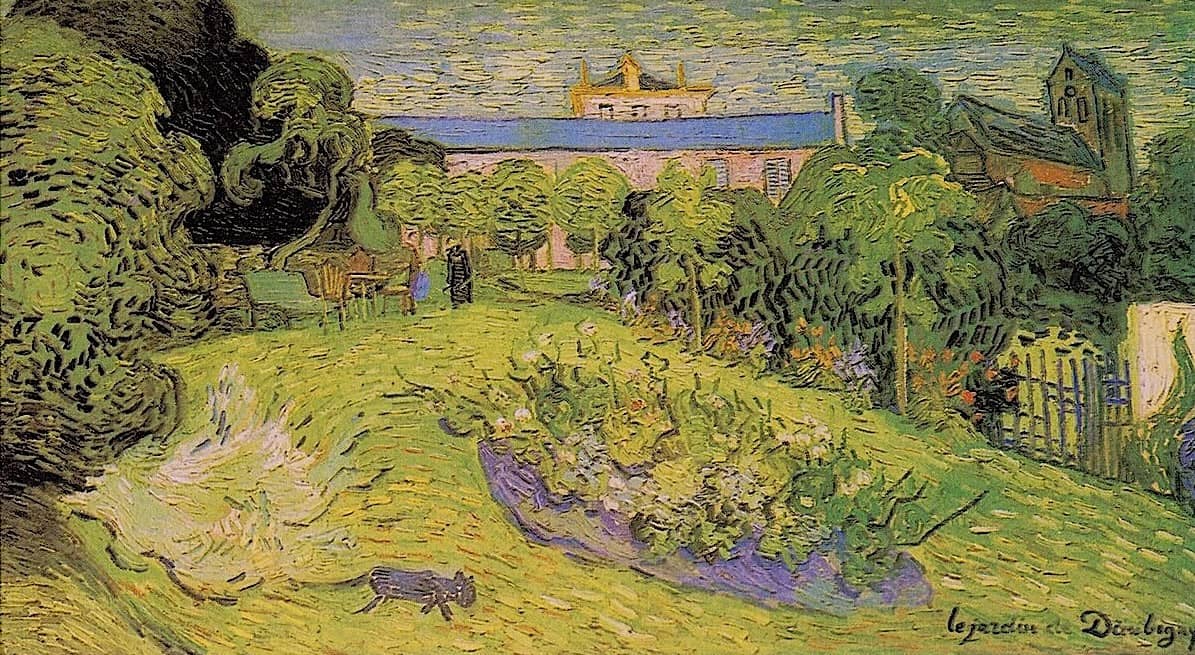Garden of Daubigny, 1890 by Vincent Van Gogh

About 10 July 1890 van Gogh wrote to his brother Theo and his wife Jo Bonger, saying that he had painted another three large canvases at Auvers since visiting them in Paris on 6 July. Two of these are described as immense stretches of wheatfields under turbulent skies, thought to be Wheatfield under Thunderclouds and Wheatfield with Crows, and the third is Garden of Daubigny.
Soon after Van Gogh's arrival in Auvers he heard of the house built for Daubigny in 1861, which was still inhabited by his widow. It was chiefly Van Gogh's admiration for Daubigny that prompted him to paint the garden of this house. Vincent often mentioned this painter's name together with those of Millet and Corot. Despite this interest, however, it was not until some time after he had made a small study of the garden that he decided to make 'a more important canvas'. Later he referred to the painting as one 'which I have been thinking about ever since I have been here'. In the next - and last - letter, in which he gave the painting a title, he made a sketch of the work and referred to it as 'one of my most purposeful canvases'. He went on, beneath the sketch, to describe the colours of the painting. All these comments taken together, as well as the copy made by Van Gogh, prove that this was an ambitious work.
The epithet 'purposeful' is not simply a reference to Van Gogh's desire to make this painting; it is also indicative of the style employed. He combined a strong, concise drawing with rhythmic, loose brushstrokes. Moreover, he altered reality to suit his purposes; both the church and the Villa Ida, which sticks up above the roof, occupy different positions relative to Daubigny's house from those shown here. The small figure towards the back of the garden presumably represents Daubigny's widow.




















